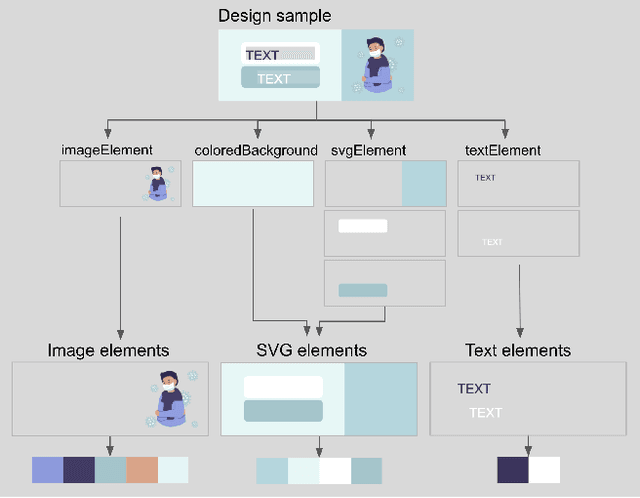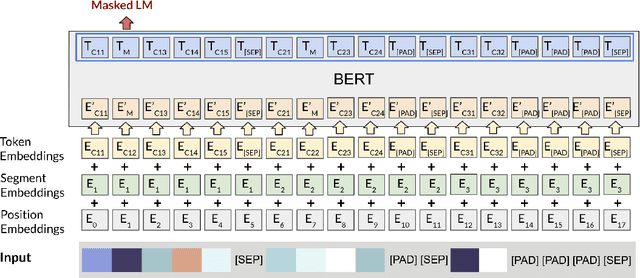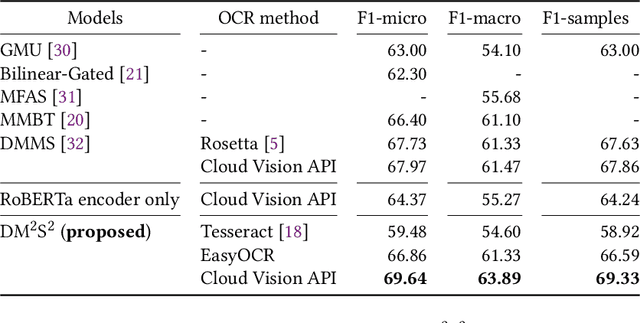Yuki Iwazaki
Color Recommendation for Vector Graphic Documents based on Multi-Palette Representation
Sep 22, 2022



Abstract:Vector graphic documents present multiple visual elements, such as images, shapes, and texts. Choosing appropriate colors for multiple visual elements is a difficult but crucial task for both amateurs and professional designers. Instead of creating a single color palette for all elements, we extract multiple color palettes from each visual element in a graphic document, and then combine them into a color sequence. We propose a masked color model for color sequence completion and recommend the specified colors based on color context in multi-palette with high probability. We train the model and build a color recommendation system on a large-scale dataset of vector graphic documents. The proposed color recommendation method outperformed other state-of-the-art methods by both quantitative and qualitative evaluations on color prediction and our color recommendation system received positive feedback from professional designers in an interview study.
DM$^2$S$^2$: Deep Multi-Modal Sequence Sets with Hierarchical Modality Attention
Sep 07, 2022



Abstract:There is increasing interest in the use of multimodal data in various web applications, such as digital advertising and e-commerce. Typical methods for extracting important information from multimodal data rely on a mid-fusion architecture that combines the feature representations from multiple encoders. However, as the number of modalities increases, several potential problems with the mid-fusion model structure arise, such as an increase in the dimensionality of the concatenated multimodal features and missing modalities. To address these problems, we propose a new concept that considers multimodal inputs as a set of sequences, namely, deep multimodal sequence sets (DM$^2$S$^2$). Our set-aware concept consists of three components that capture the relationships among multiple modalities: (a) a BERT-based encoder to handle the inter- and intra-order of elements in the sequences, (b) intra-modality residual attention (IntraMRA) to capture the importance of the elements in a modality, and (c) inter-modality residual attention (InterMRA) to enhance the importance of elements with modality-level granularity further. Our concept exhibits performance that is comparable to or better than the previous set-aware models. Furthermore, we demonstrate that the visualization of the learned InterMRA and IntraMRA weights can provide an interpretation of the prediction results.
 Add to Chrome
Add to Chrome Add to Firefox
Add to Firefox Add to Edge
Add to Edge